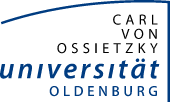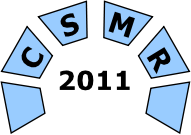
CSMR 2012
Doctoral Symposium
Tuesday, March 1, 2011, from 14:00 to 18:00, A14 1-114In this year the doctoral symposium provides a wide spectrum of interesing research topics. The goal of this symposium is to promote the work of various scientists and to show the relevance of their works.
The following scientists will present their works and success stories at CSMR 2011:
- Markus Borg, Lund University, Sweden - In Vivo Evaluation of Large-scale IR-based Traceability Recovery
- Adam Przybylek, University of Gdansk, Poland - Impact of aspect-oriented programming on software modularity
- Aakash Ahmad, Lero - The Irish Software Engineering Research Centre, Ireland - Customisable Transformation-Driven Evolution for Service Architectures
- Marija Katic, Kresimir Fertalj, University of Zagreb, Croatia - Model for Dynamic Evolution of Aspect-Oriented Software
- Andreas Seibel, Hasso Plattner Institute, Germany - From Software Traceability to Global Model Management and Back Again
- Lama Balloul, Carl von Ossietzky University Oldenburg, Germany - Management of the Interfaces during their Life Cycle in a System Landscape
In Vivo Evaluation of Large-scale IR-based Traceability Recovery
Markus Borg
Lund University, Sweden
Modern large-scale software development is a complex undertaking and coordinating various processes is crucial to achieve efficiency. The alignment between requirements and test activities is one very important aspect. Production and maintenance of software result in an ever-increasing amount of information. To be able to work efficiently under such circumstances, navigation in all available data needs support. Maintaining traceability links between software artifacts is one approach to structure the information space and support this challenge. Many researchers have proposed traceability recovery by applying information retrieval (IR) methods, utilizing the fact that artifacts often have textual content in natural language. Case studies have showed promising results, but no large-scale in vivo evaluations have been made. Currently, there is a trend among our industrial partners to move to a specific new software engineering tool. Their aim is to collect different pieces of information in one system. Our ambition is to develop an IR-based traceability recovery plug-in to this tool. From this position, right in the middle of a real industrial setting, many interesting observations could be made. This would allow a unique evaluation of the usefulness of the IR-based approach.
Impact of aspect-oriented programming on software modularity
Adam Przybylek
University of Gdansk, Poland
Modularity is the single attribute of software that allows a program to be intellectually manageable. The recipe for modularizing is to define a narrow interface, hide an implementation detail, keep low coupling and high cohesion. Over a decade ago, aspect-oriented programming (AOP) was proposed in the literature to “modularize the un-modularizable”. Since then, aspect-oriented languages have been providing new abstraction and composition mechanisms to deal with concerns that could not be modularized because of the limited abstractions of the underlying programming language. However, every new paradigm makes claims that managers want to hear. The aim of this dissertation is to find out how much of what has been written about the AO modularization is true and how much is hype.
Customisable Transformation-Driven Evolution for Service Architectures
Aakash Ahmad, Lero
The Irish Software Engineering Research Centre, Ireland
Service-based architectures have now become commonplace, creating the need to address their systematic maintenance and evolution. We propose to enable transformation-driven evolution for service architectures in a semi-automated fashion. In contrast to the existing solutions like service wrapping, migration or run-time adaptation etc., the proposal supports primitive and customisable architectural transformations to support an incremental evolution for service architectures. An empirical approach is adopted to investigate the extent to which the architecture evolution tasks (i.e. modeling, transformation and refinement) can be automated and validated in context to the central hypothesis for architecture-centric software evolution. Based on the initial results, we plan to proceed toward modeling and automating the architectural evolution in a formal way.
Model for Dynamic Evolution of Aspect-Oriented Software
Marija Katic, Kresimir Fertal
Model for Dynamic Evolution of Aspect-Oriented Software
The number of application domains in which systems must deliver continuous reliable service during update is growing as well as the application of aspect-oriented paradigm in such systems. In this paper we address the problem of updating running aspect-oriented software. The goal of the research is to design and to build the model for dynamic update of aspect-oriented software considering continuity of updates (in the presence of prior updates) that enables such software to be updated at runtime.
From Software Traceability to Global Model Management and Back Again
Andreas Seibel
Hasso Plattner Institute, Germany
In the past, traceability was concerned with tracing requirements also known as requirements traceability. Meanwhile, model-driven engineering (MDE) becomes popular and in this context, requirements traceability evolved to a more general software traceability, which is about tracing any relationship between software artifacts. Due to increasing heterogeneity and complexity of MDE, global model management (GMM) becomes indispensable to MDE. In state-of-the-art GMM approaches, traceability is primarily concerned with tracing model transformations, which generate traceability information as side-effect. However, this is only a subset of the capabilities of software traceability. My hypothesis is that GMM can benefit from software traceability by applying software traceability techniques into the context of GMM. Thus, I will consider GMM from a traceability perspective and show new possibilities to GMM that arise from taking in this perspective.
Management of the Interfaces during their Life Cycle in a System Landscape
Lama Balloul
Carl von Ossietzky University Oldenburg, Germany
Software systems tend to grow larger with time, become less structured with changes and less understandable with stuff turnover. These systems are not isolated in their landscape, rather connected to several other systems with heterogeneous architectures supported by wide diverse of communications. These systems are applied to maintenance efforts from the moment they are delivered. Within the maintenance and changes in the system, consequence changes are noticed on the interfaces level. Both maintenance of the interfaces and the implementation have nontrivial percentage costs of the IT-budget. The management of the interfaces during their life time starting with defining them or retrieving them and ending with deactivation phase is explained within its steps in this paper of progress. A reduction in the costs for maintaining the interfaces is expected as one of the results in this work.

